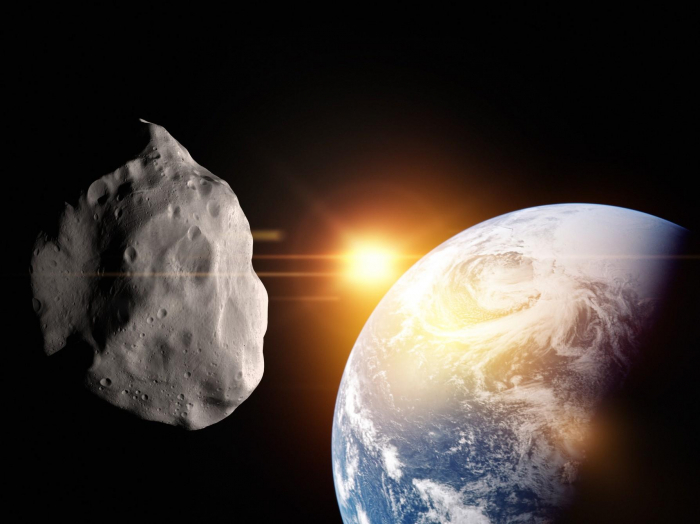On 13 April, 2029, people looking towards the sky will see a speck of light streaking across it, which will quickly get brighter and faster. It will be travelling so fast that it will cross the width of the Moon in a minute and be as bright as stars in the sky.
Scientists have named the rock Apophis, after the Egyptian god of chaos.
The glowing speck will be a huge asteroid, 340 meters across, that Nasa is already preparing to watch as it flies past Earth. The space agency says that it will fly far enough away as to be harmless – at a distance of 19,000 miles – but that is as close as some of the spacecraft that flies past Earth.
It is also close enough that researchers will be able to get an unprecedented look at the asteroid itself. They will be able to see the rock in sharp detail, allowing them to observe it in new ways.
It’s very rare for asteroids of this size to go past so close. Scientists have seen smaller asteroids at a closer distance, but something of such a colossal size are far fewer in number, Nasa said.
“The Apophis close approach in 2029 will be an incredible opportunity for science,” said Marina Brozović, a radar scientist at NASA’s Jet Propulsion Laboratory in Pasadena, California, who works on radar observations of near-Earth objects (NEOs). “We’ll observe the asteroid with both optical and radar telescopes. With radar observations, we might be able to see surface details that are only a few meters in size.”
Scientists meeting this week at the 2019 Planetary Defense Conference in College Park, Maryland – where they have also been role-playing a fictional collision with an asteroid – have been discussing how to watch the asteroid and missions that could be sent out to meet it.
It will first be visible to the naked eye when it arrives in the night sky over the Southern Hemisphere, shooting across the east coast to the west coast of Australia. It will make its way around the world, cross the Indian Ocean on its way to the US.
Its closest approach will be over the Atlantic Ocean, as the evening arrives in the US. It will move so fast that it will cross the ocean in just an hour, and will then fly off into space.
Apophis was first spotted by astronomers at the Kitt Peak National Observatory in June 2004. Soon after spotting it, further work was derailed by technical and weather problems.
But it was spotted again by scientists in Australia, who calculated it had a 2.7 per cent chance of hitting Earth when it passed by in 2029. It has since been watched more closely and that possibility has been ruled out.
Researchers now say that further work and calculations show there is only a 1 in 100,000 chance the asteroid will hit Earth. But further work will be required to rule out future impacts.
When it arrives in 2029, that observation will continue. Scientists hope to learn more about the asteroid’s size, shape, composition and maybe its interior.
At the conference, researchers discussed questions such as whether the asteroid will affect Earth’s gravity, whether they will be able to peer inside and whether it should be met by a spacecraft.
“We already know that the close encounter with Earth will change Apophis’ orbit, but our models also show the close approach could change the way this asteroid spins, and it is possible that there will be some surface changes, like small avalanches,” said Davide Farnocchia, an astronomer at JPL’s Center for Near Earth Objects Studies (CNEOS), who is co-chairing the April 30 session on Apophis with Brozović.
And researchers hope that the work they do on this flyby could protect us if any other asteroid were to come towards Earth.
“Apophis is a representative of about 2,000 currently known Potentially Hazardous Asteroids (PHAs),” said Paul Chodas, director of CNEOS. “By observing Apophis during its 2029 flyby, we will gain important scientific knowledge that could one day be used for planetary defense.”
The Independent
More about: NASA
















































